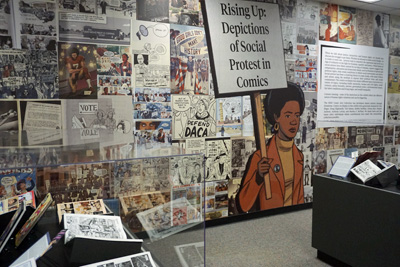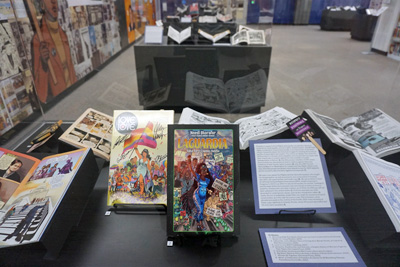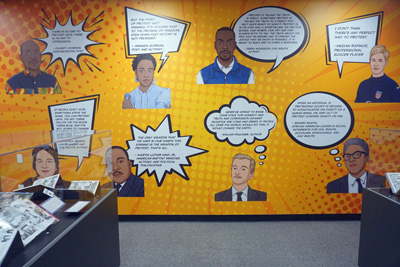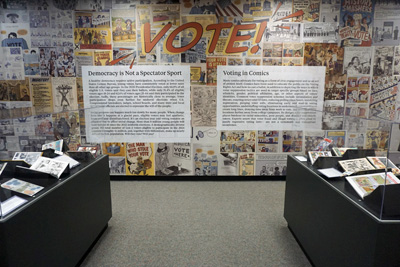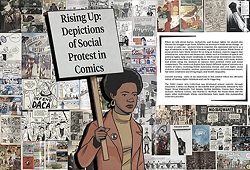
Change is often driven from below, especially when governments are slow or reluctant to take the initiative themselves. At that point, the people take matters into their own hands, not through violent revolution but peaceful protests that convey the need for change and strength of those demanding it. Sometimes it can be as simple as using the ballot box to bring about a change in government. Other times, it takes the form of a mass demonstrations, marches, and acts of civil disobedience.
People likewise protest for a variety of reasons. In 1932, World War I veterans marched on Washington, D.C. to demand early payments for bonuses that were promised them for serving. Thirty years later, Martin Luther King Jr. helped lead a March on Washington for African American civil rights. Antiwar activists, women, the LGBTQ community, and the survivors of school shootings have also marched, demanding change to existing laws and government policies, as well as to simply have their voices heard.
In 2024, the San Diego State University library explored the use of protest as a vehicle for change with its temporary exhibit Rising Up: Depictions of Social Protest in Comics. “Protests and struggles for social progress have really ramped up again in recent years,” Popular Culture Librarian and Center for Comic Studies Co-Director Pamela Jackson, who also served as curator, explained in March 2024. “We see protests in the news constantly. It’s my hope that the students, our main audience, will learn more about our long history of meaningful protest as a powerful way to lobby for social change and that they are also drawn to participate in broader civic action.”
While it might seem strange to use comic books and graphic novels as learning tools, the medium has seen an increase in nonfiction memoirs and historical narratives in recent years. The trend hit the mainstream in 1992 when Art Spiegelman was awarded the Pulitzer Prize for his graphic novel Maus, which told the story of the Holocaust by depicting Jewish victims as mice and their German oppressors as cats.
Civil rights icon John Lewis, meanwhile, credited a comic book for his eventual involvement in the movement. The sixteen-page Martin Luther King and the Montgomery Story was published by the Fellowship of Reconciliation in 1957 and recounted the Montgomery bus boycott from the year before, as well as the nonviolent philosophy of Martin Luther King Jr. Lewis was elected to the House of Representatives in 1987 and mentioned the comic book to his technology policy aide Andrew Aydin during his 2008 reelection campaign.
“Once he told me about it, and I connected those dots that a comic book had a meaningful impact on the early days of the Civil Rights Movement, and in particular on young people, it just seemed self-evident,” Aydin explained to Comics Alliance in 2013. “If it had happened before, why couldn’t it happen again?”
Lewis and Aydin co-wrote the graphic novel trilogy March – illustrated by Nate Powell – as a result, which told the story of the Civil Rights Movement and Lewis’s involvement in illustrated form. Since the release of the final volume, March has been adopted into the curriculum of school districts across the country, including Atlanta, San Francisco, and New York City. March: Book Three also became the first graphic novel to win a National Book Award.
As with Maus twenty years earlier, March led the way for a plethora of similar graphic novels that explored nonfiction topics. Like March, many have also found their way into high school and college courses and curriculums, fueling a “comics in the classroom” movement that had been building for decades.
The Rising Up: Depictions of Social Protest in Comics exhibit at San Diego State University highlighted many of the more recent publications, including Becoming RBG: Ruth Bader Ginsburg’s Journey to Justice – a biography of the former Supreme Court justice published in 2019 – and Big Black: Stand at Attica, the 2020 graphic memoir of Frank “Big Black” Smith, who was incarcerated at Attica State Prison and played a major rule during the 1971 prisoner uprising.
Rising Up was broken into seven sections, with each display case focused on a specific topic – civil rights and equality; wealth inequality; women’s rights; police brutality against African Americans; freedom of speech; different methods of social protest; and the environment. While most of the comic books and graphic novels featured were nonfiction, a number of fictional narratives were highlighted as well.
I Am Alphonso Jones – published in 2017 and created by Tony Medina, John Jennings, and Stacey Robinson – tells the story of an African American high school student shot by an off-duty police officer who watches his family and friends seek justice for his death from the afterlife. Superman: Son of Kal-El, meanwhile, follows the exploits of Clark Kent and Lois Lane’s bisexual son Jon Kent. Issue seven of the series features the teenage Superman leading a protest against climate change.
John Lewis was born and raised in rural Alabama and read the Sunday comics section of the local newspaper as a kid. Although he found them enjoyable, they really didn’t make an impact. “What really turned me on I think was Martin Luther King, Jr.’s The Montgomery Story,” Lewis told Comics Alliance in 2015. “It was drawings of people doing stuff, of Dr. King speaking, Rosa Parks sitting down, people organizing the bus boycott. I saw people doing something that was action.”
John Lewis dedicated the rest of his life to doing action, first as a member of the Civil Rights Movement and then as a United States Congressman. Rising Up: Depictions of Social Protest in Comics may not have the same impact but provided a way for students at San Diego State University to understand the important role that protests have played in the United States – and exposed them to a number of great comic books and graphic novels in the process.
Anthony Letizia
